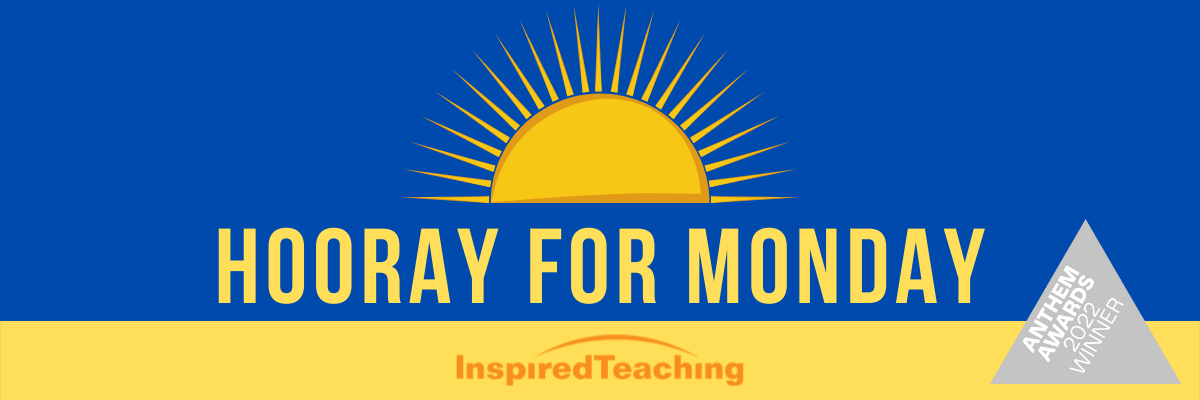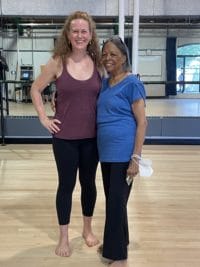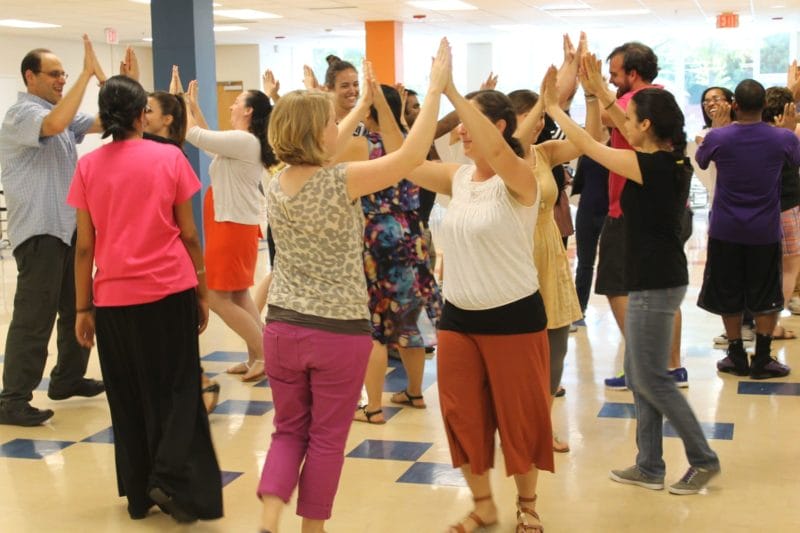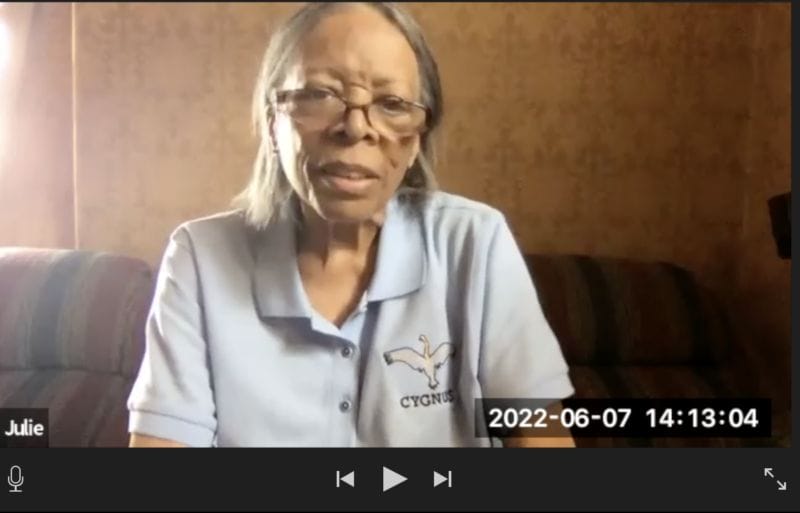June 13, 2022
By Aleta Margolis, Founder and President, Center for Inspired Teaching
Hooray for Monday is a weekly blog filled with questions, ideas, reflections, and actions we can all take to remodel the school experience for students.

Recently I had the great joy and honor of taking a dance class with my college professor, Julie Adams Strandberg. It was not just any class; it was Julie’s final class at Brown University, where she started the dance program in 1969, and where, at the glorious age of 80, she has just retired from full-time teaching.
 Throughout her 50+ year career, Julie has challenged the notion that dance is the purview of an elite group of trained professionals. She is an award-winning dancer and choreographer and has taught, and danced alongside, countless professional dancers. However, Julie is just as proud of the middle and high schoolers; children on the autism spectrum; and elders with Parkinson’s Disease whom she counts among her students. And Julie often brings together this diverse array of intergenerational dancers to study and perform in the same classroom and on the same stage.
Throughout her 50+ year career, Julie has challenged the notion that dance is the purview of an elite group of trained professionals. She is an award-winning dancer and choreographer and has taught, and danced alongside, countless professional dancers. However, Julie is just as proud of the middle and high schoolers; children on the autism spectrum; and elders with Parkinson’s Disease whom she counts among her students. And Julie often brings together this diverse array of intergenerational dancers to study and perform in the same classroom and on the same stage.
Julie insists, “It’s not a question of who gets to dance. Dancers get to dance!” (Watch a short video excerpt of our conversation here.)
And by looking at everyone as a potential dancer, Julie has learned valuable lessons that apply to all of us who are teachers.
Julie explains, “Dancing is always about limitations. Every dancer, including Baryshnikov…has a strength, and they have something that they have to keep working on.” In speaking about the elders with Parkinson’s whom Julie teaches, she says, “If you teach them as if they’re dancers, then you’re not teaching them about what they can’t do, you’re teaching them about what they can do…If you feel like you are focusing on what you can do, it’s a whole different mindset.”
Before joining Brown’s faculty, Julie was an elementary school teacher. When I asked her how she’d advise teachers today on supporting students who struggle to focus and concentrate in school, she replied: “The body has to move before it can sit down and concentrate.” She recommends sending students outside where possible or giving them indoor tasks that involve moving their bodies, in order to “wake up their nervous system” before asking them to sit and focus. (And of course, Julie points out that focus can and does happen when a body is in motion too!)

Julie’s teaching approach embraces asset framing, which I’ve written about as a mindset we should all understand as we strive to support our students. Her approach also emphasizes belonging, one of Inspired Teaching’s ABCDE’s of Learner Needs. Julie says that the community-building power of dance can combat the “sense of isolation and loneliness” that elders with Parkinson’s often experience, and that so many of our students have experienced during these past few years. “Once you’re a part of a repertory or a dance, then you are an essential part of a community that is relying on you to tell a story,” she says.
Julie points out, “You learn things from people with special needs that apply to all people.”
Though Julie has retired from her full-time faculty position, she continues teaching and advocating for access to dance through the many nonprofit organizations she has founded over the years.
As we look toward summertime, with the opportunities it offers to reflect on our practice, how might we see our students differently – as dancers, mathematicians, historians – and most importantly, as essential parts of our learning community?
Resources
4 Ways to Nurture Community this Summer
- Join us for our Summer Institutes! Whether you become a Speak Truth Fellow, or participate in our July or August Institutes (both focused on self-care and strengthening relationships) learning with fellow teachers is an excellent way to grow your own group of essential community members.
- Create a creative collective project. Community building comes naturally when we are engaged with others in meaningful work. Whether you plan a neighborhood potluck, a community trash clean-up, work with others to plant a butterfly garden, arrange a flash mob dance, or do something else that brings people together – you’ll find that the work is worth it when you share in the process of creating together.
- Sign up for a dance class. Or if dance doesn’t feel right, try a yoga class, a rec league sport, or some other experience in which you are moving in community with others. Try something that is very different from what you normally do, the unusual nature of the experience will put you in the position of a learner, and that will make you lean into the community even more.
- Thank your community. It’s always a surprise to discover that thanking others for the role they play in your life actually makes YOU feel good. We never have time for this during the school year, but summer offers a little more breathing room. Get a packet of envelopes and cards and write the names and addresses of all the people in your community that you want to thank on the envelopes, put stamps on them too. Then, whenever you have bits of time this summer, write one or two notes and put them in the mail. Be specific in your thanks, and challenge yourself to remember the particular things these people have done to build a community for you.
ADDITIONAL RESOURCES
What can dance teach us?
In this video, Julie explains the many connections that can be made between dance and history, reading, writing, and other subjects. She also explores the critical connection between movement and learning.
A Case for Dance in Education
This article describes one of Julie’s projects called “River East: A Developmental Dance/Literature Curriculum for the Elementary School.” It offers a compelling argument for why the arts, and dance in particular, are important not only in education but for the well-being of society as a whole.
“It is the mission of the educator to perceive the needs of a culture that go beyond the financial. Our society with its resurgence of racism, its questionable ethical practices, and its lack of communication and interpersonal understanding with the peoples of the world, is a civilization expressing other kinds of needs – needs as compelling as its requirement for more technical knowledge. The arts in general and dance in particular transmit culture, teach skills, and fulfill. There is perhaps no better description of education than this.” – Carolyn Adams and Julie Adams Strandberg


